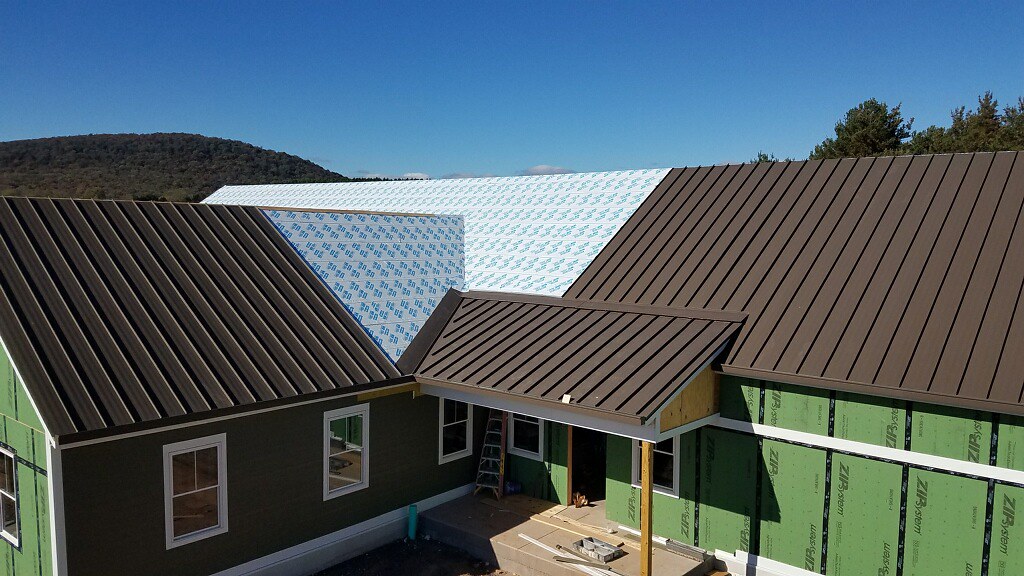
What is Colorbond Roofing?
Colorbond roofing is a type of roofing that’s made from plastic sheets that are bonded together using an adhesive. It’s a relatively new material, and there is still some debate about its long-term durability and performance.

Some people believe that Colorbond roofs don’t last as long as other types of roofs and that they require more maintenance than other types of roofs. Others think that Colorbond is the future of roofing because it’s easier to install than other types of roofs, it looks nicer than traditional asphalt or metal rooftops, and it doesn’t require painting or staining.
So what do you think? Is Colorbond really the best option for your home?
How does it work?
Colorbond Roofing is a sustainable roofing material made from recycled plastic bottles. The material is injected into the roof membrane through a process called laminate injection, which creates an impermeable and waterproof surface.
The Colorbond team believes that this new technology has the potential to make a significant impact on the world’s oceans. Currently, approximately 20 million tons of plastics are produced every year, and only 1% is recycled. This means that almost all of the plastic used in conventional roofs ends up in our oceans – posing a major threat to marine life and ecosystems.
With Colorbond Roofing, all of those harmful materials would no longer be circulating throughout our environment – they would simply become part of the fabric of society!
The types of colorbond roofing
There are many types of colorbond roofing, and each has its own benefits. Here are three popular types of colorbond roofing:
- Polyurethane (PU) roofs
PU roofs are the most common type of colorbond roofing because they’re durable and affordable. They have a smooth finish that looks like traditional shingle roofs, but they’re tougher and resistant to rot, decay, and pests.
- TPO (thermoplastic polyolefin) roofs
TPO roofs work well in areas with heavy rainfall or high winds because their flexible plastic sheets can bend without breaking. They also offer excellent fire protection due to the fact that they contain no wood products.
- Colorbond metal-clad systems
CMCSs is a hybrid style of colorbond roofing that combines features from both TPO and PU roofs. This type of system is tough enough for windy conditions, but still offers some flexibility for weather changes
Do you need it?
There is a lot of debate on the benefits of Colorbond roofing, with some people claiming that it is more durable and resistant to wood decay than other types of roofing materials.
However, there isn’t enough evidence to support these claims. In fact, most studies suggest that colorbond roofs are just as susceptible to rot and damage as traditional roofs.
Pros and Cons of Colorbond Roofing
Pros:
There are a number of benefits to using Colorbond roofing, including:
- Colorbond roofs are very affordable
Colorbond roofing is less expensive than other types of roofs, and it doesn’t require any special installation or maintenance procedures. You just need to apply a sealant once the job is completed, and you’re ready to go!
- They are also extremely durable
Colorbond roofing is designed to last longer than other types of roofs, and it can handle weather conditions better than other materials. It’s also resistant to UV rays and aging, which means it will look good for years to come.
- Varieties
They have a variety of colors and styles available, so you can find one that matches your home perfectly.
- Environmental friendliness.
Roofs are one of the biggest contributors to air pollution in cities – colorbonds don’t release any pollutants when they’re installed or repaired!
Cons:
There are some cons to using colorbond roofing, even though it is such a popular product. Here are four of the most common ones:
- Very Low Cost
While Colorbond roofs are very low cost, they do not offer the same level of customization as other types of roofing options. Some may find this to be a downside because they want more control over their look and feel when it comes to their home’s exterior environment.
- Fade quickly
Colorbond roofs can fade quickly due to sun and weather exposure. This can lead to an unpleasant appearance and possible damage to your home.
- Maintenance
They require regular maintenance, which includes removing moss, cleaning algae growth off the surface, and correcting any colour discrepancies caused by fading or staining.
- No repairing
If you have any problems with your colorbond roofing – be they from wear and tear or leaks – you will likely need to replace it altogether rather than repair it.
Why would I need it?
Many people are unaware that colorbond roofing is an option for homeowners. Colorbond is a type of asphalt shingle made from recycled rubber and plastic materials. It has many benefits over traditional roofing materials, such as being tougher and more resistant to UV damage, fogging, moisture penetration, and shrinkage.
One reason why colorbond may be a good choice for certain homes is that it can help reduce energy costs. The colors used in colorbOND products mimic the natural light and hue of the sky or daylight hours which can save on lighting needs during daytime hours spent inside the home.
Additionally, since it’s also waterproof/sealing material there’s no need for additional weather sealing measures like caulking around windows or doors – just apply sealant when you paint!
Bottom Line
If you’re looking for a low-maintenance roofing system that won’t damage your property, then Colorbond roofing is a good option. It’s also one of the most affordable options available on the market today. However, there are several factors to consider before making a decision – such as a climate and weather conditions, your budget, and installation needs.
So, it’s important to consult with One Stop Roofing experts if you have any questions about colorbond roofs.


